Nexus 7 (2013) - Mini Review
by Brian Klug on July 27, 2013 12:54 AM EST- Posted in
- Tablets
- Snapdragon
- Qualcomm
- Android
- Mobile
- APQ8064
- Nexus 7
- Android 4.3
Last year the Nexus 7 debuted with a Tegra 3 SoC, which for reminder consisted of a 4+1 architecture of ARM Cortex A9 CPUs, with the 4 A9s built on 40nm G, and the +1 “shadow core” A9 built on 40nm LP (TSMC’s 40 LPG process), accompanied by ULP GeForce GPU with 12 cores running at a max GPU clock of 416 MHz. The exact SoC was NVIDIA’s Tegra 3 T30L, which could run one A9 at up to 1.3 GHz and all A9s at up to 1.2 GHz.
Rather than the relatively logical upgrade path of going to NVIDIA’s Tegra 4 SoC (I’ve heard all manner of speculation about what happened there), the new Nexus 7 switches to Qualcomm’s APQ8064–1AA, a version with 4 Krait 300 CPU cores (yes, Krait 300, not 200) running at up to 1.5 GHz and Adreno 320 graphics. Rather than use a PoP and LPDDR2, this specific APQ8064 variant goes to PCDDR3L–1600 MHz instead, including 4, 4Gb discrete 1.35V SK-hynix DRAM devices off to the side (more on the opposite side of the PCB) adding up to 2 GB of RAM. Qualcomm's Snapdragon S4 Pro and Snapdragon 600 branding gets confused here, although Qualcomm is calling the APQ8064 inside the Nexus 7 (2013) S4 Pro, it's more like an underclocked or lower binned Snapdragon 600.
At this point APQ8064 is probably the most well understood SoC in recent memory (so much so that I’m pining for devices to include something different just from an academic perspective) so I’ll spare the very verbal discussion about its performance.
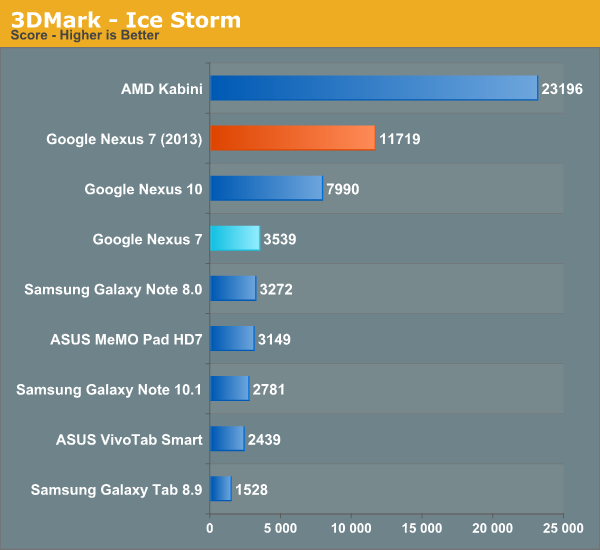



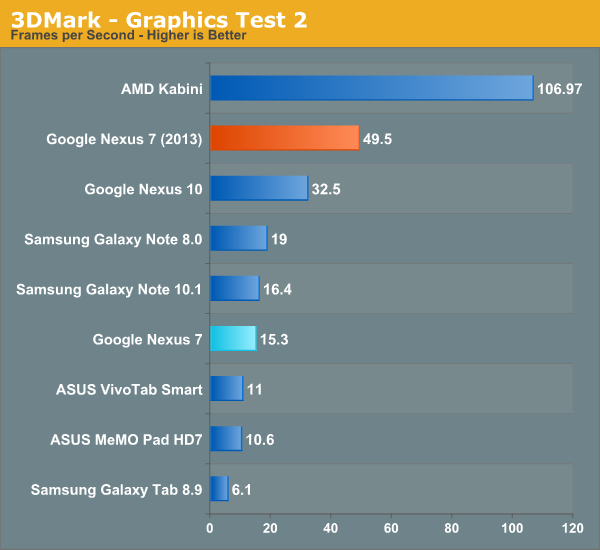
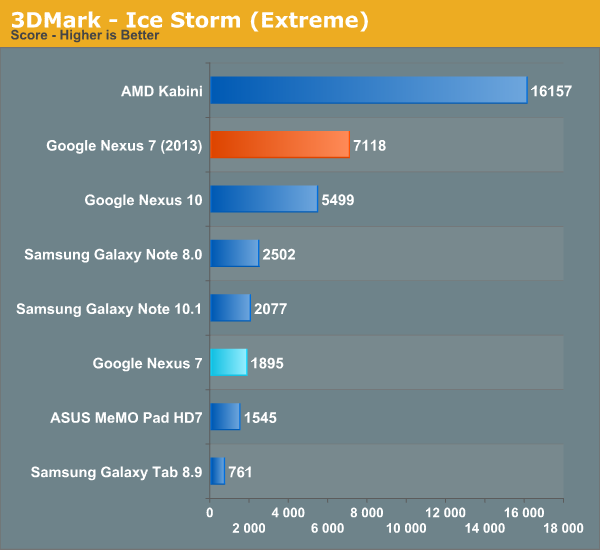

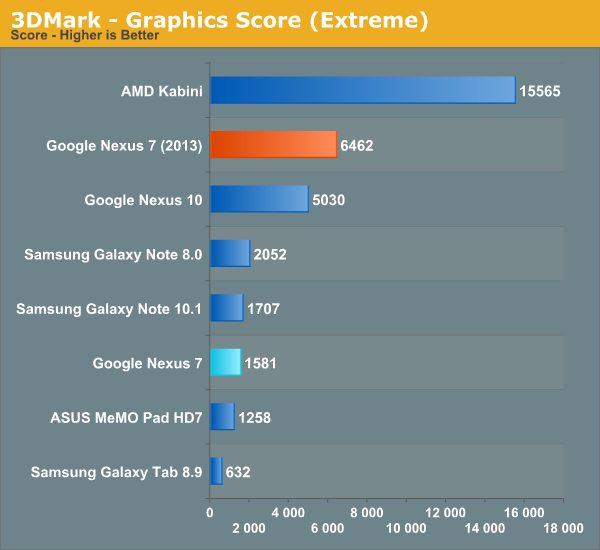

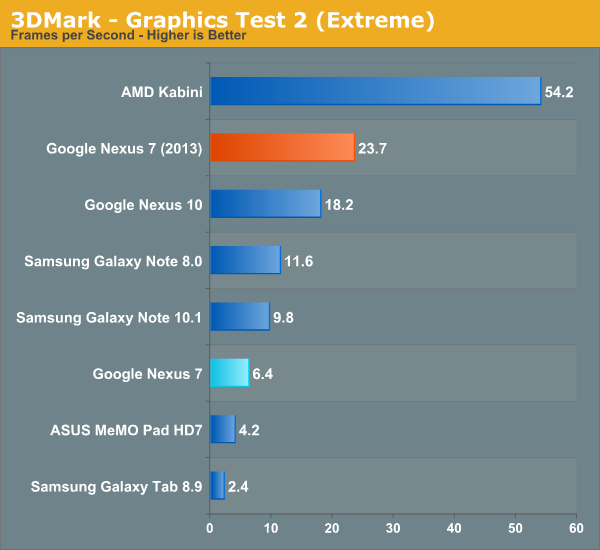


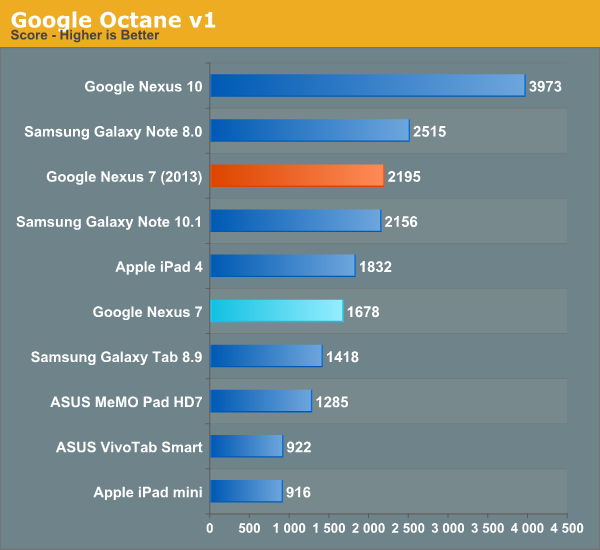
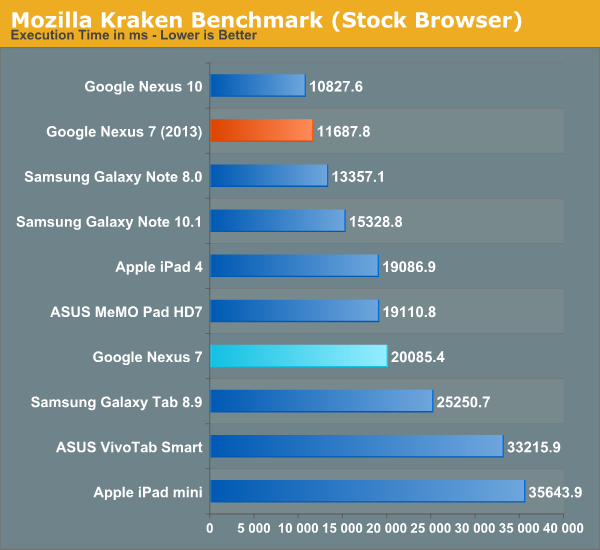
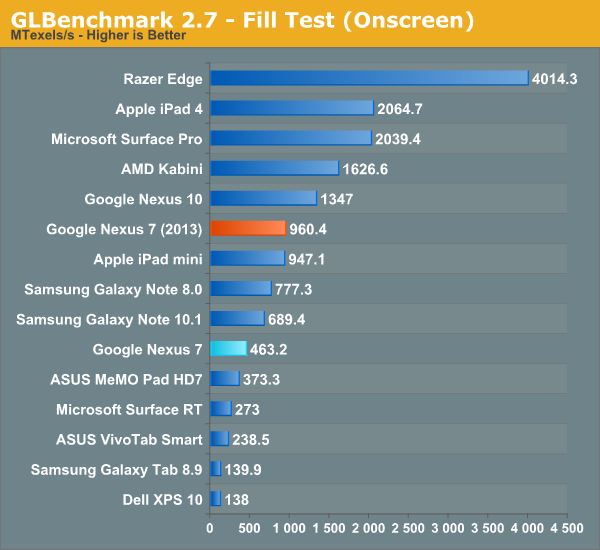
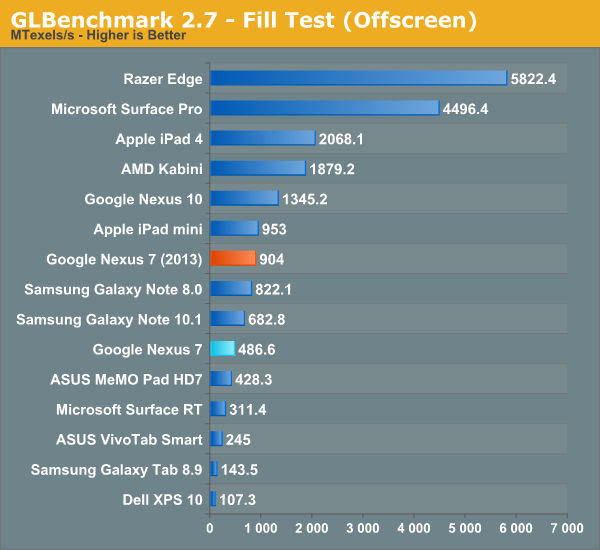
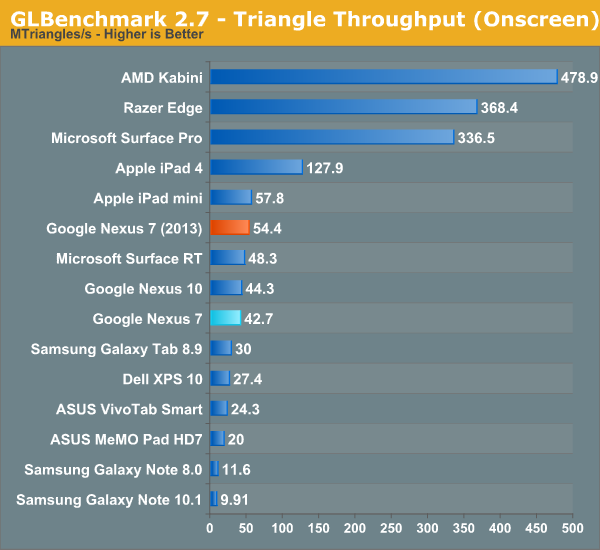
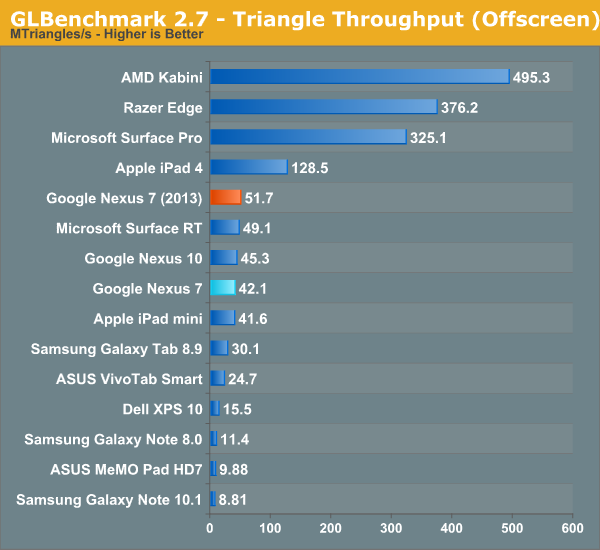
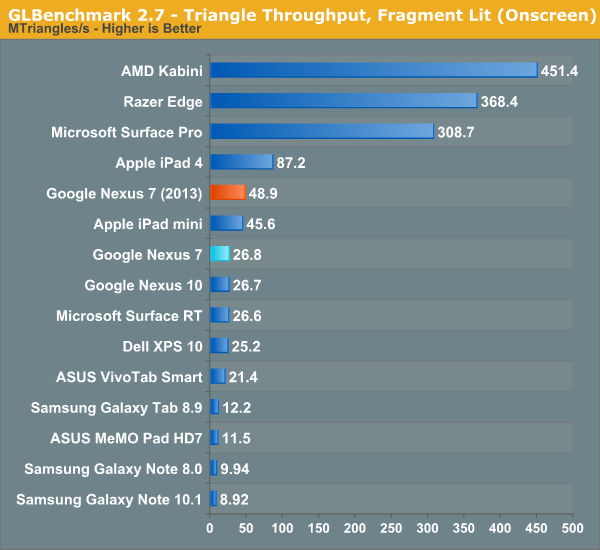
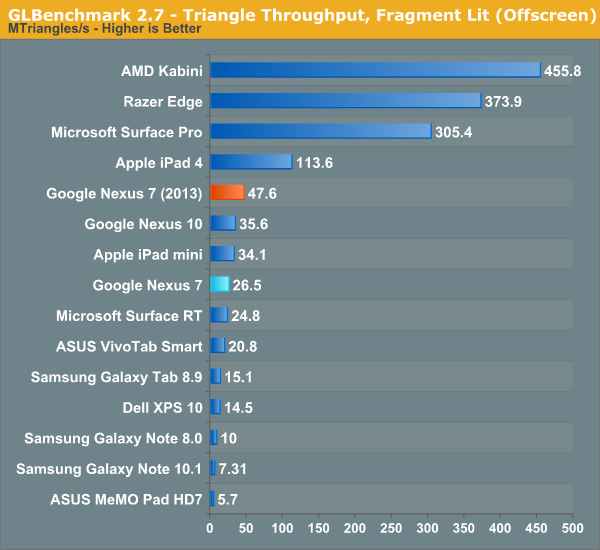
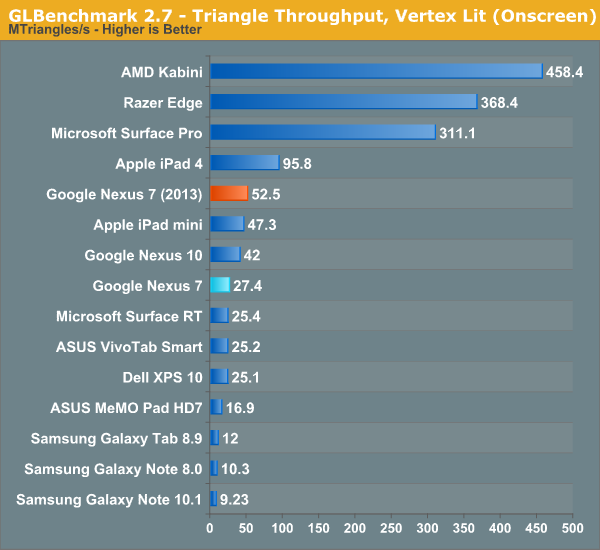
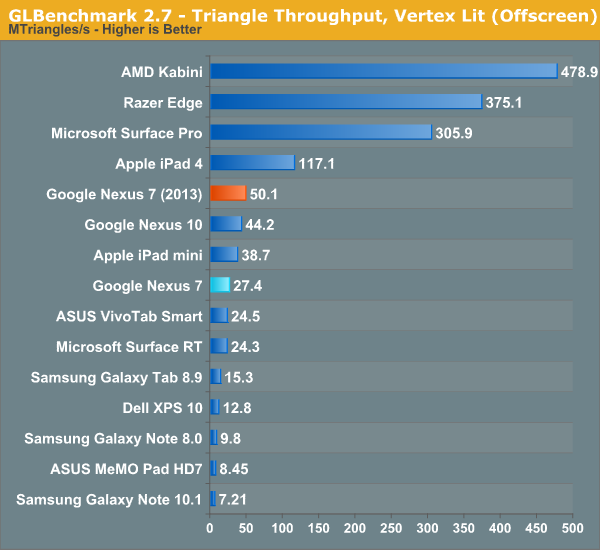

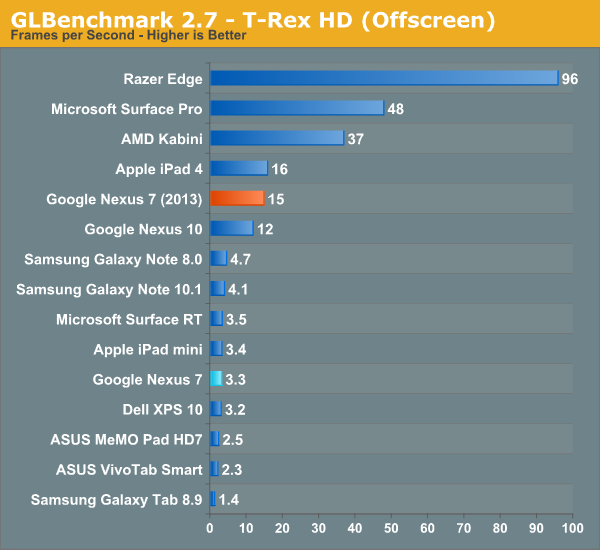
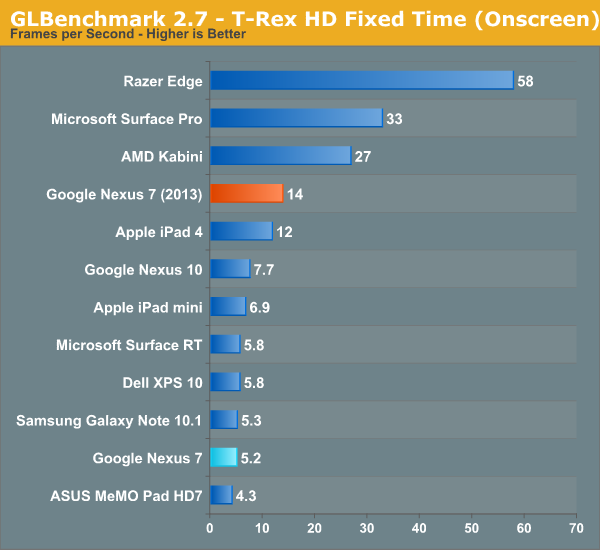
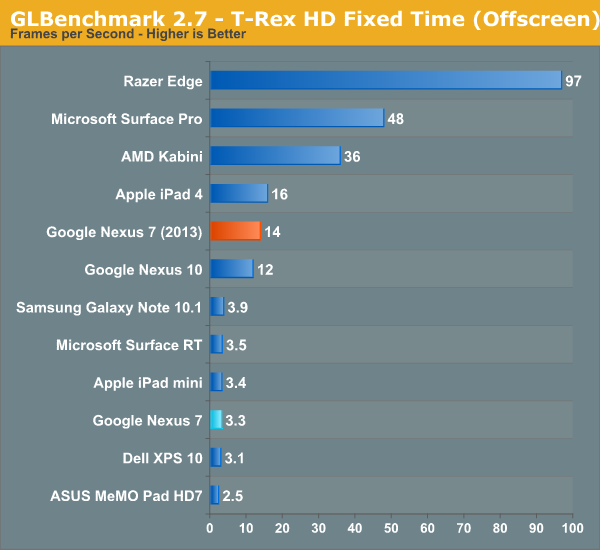
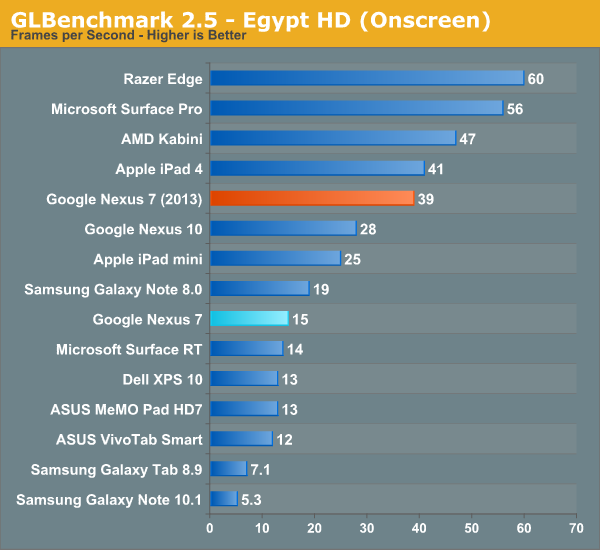
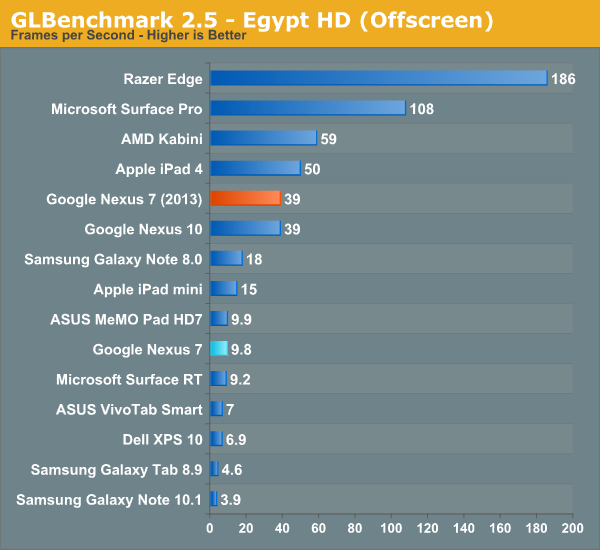
Suffice it to say, moving from 1.2–1.3 GHz Tegra 3 to 1.5 GHz APQ8064 represents a big jump forwards in performance. Google claimed 1.8x improvement on CPU performance, and 4x improvement on GPU, which gets validated pretty much consistently through the benchmarks. I never felt like Tegra 3 was a slouch by any means (performance was more I/O bound on the OG Nexus 7, which we’ll talk about in a moment), but the new Nexus 7 has ample performance for the considerable increase in screen resolution.
Dat eMMC
It wasn’t any secret with the original Nexus 7 that much of the real world performance was gated by storage I/O throughput – we wrote about it after all – and storage performance was a common complaint while multitasking on a few other previous and similar era ASUS tablets. Most of the time performance was acceptable, and for $200 you can’t complain too much about things, the issue was that further on in the life of the tablet performance began degrading somewhat notably, leading to complaints.
Obviously the first thing I did on the Nexus 7 (2013) was run Androbench with the same 100 MB settings to test and see what out of box I/O performance looks like. Things are much better with the new Nexus 7 than they were with the previous one, so at a high level all is good.
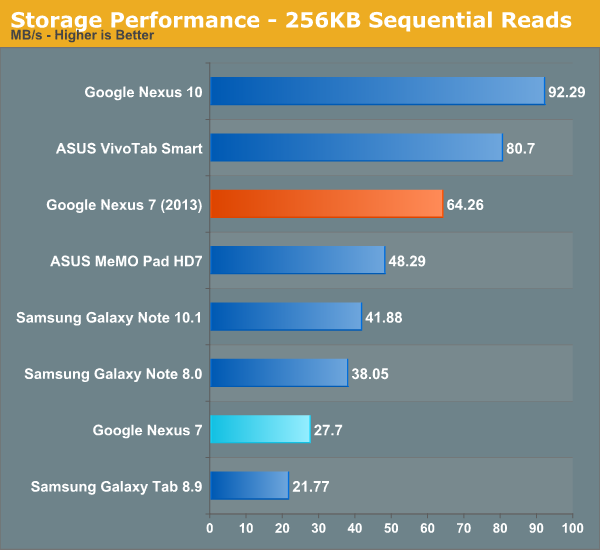
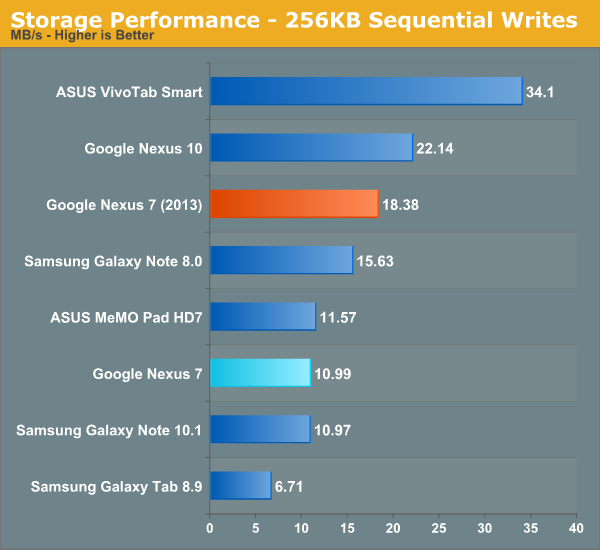
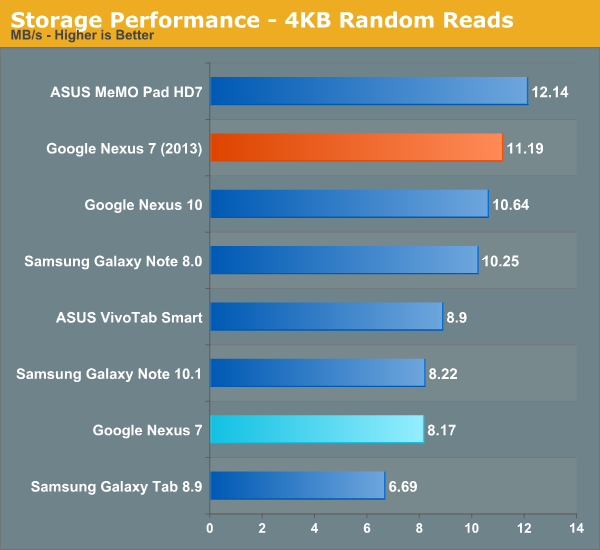

The story actually is a bit more involved however. One of the big problems was that the slowness which occurred with the prior Nexus 7 took device aging to appear – it was great for the first few months, but after you started loading it things tailed off. The new Nexus 7 (2013) with Android 4.3 includes support for fstrim, essentially idle garbage collection, which TRIMs the eMMC when a few conditions are met – the device is idle, screen off, and battery above roughly 70-percent. I’m told that TRIM support has been part of the eMMC standard since around version 4.2, it was just a matter of enabling it in software. The result is that the new Nexus 7 shouldn’t have these aging affects at all. Better yet, fstrim support has also been added to the old Nexus 7 with as of the Android 4.3 update, so if you’ve got a Nexus 7 that feels slow, I/O performance should get better after fstrim runs in the background. I'm checking on whether the other Nexus devices have also had TRIM support added. I would consider the slow storage aging problem fixed as of now, and Google took the eMMC and storage I/O performance issues with the previous Nexus 7 to heart for this version.


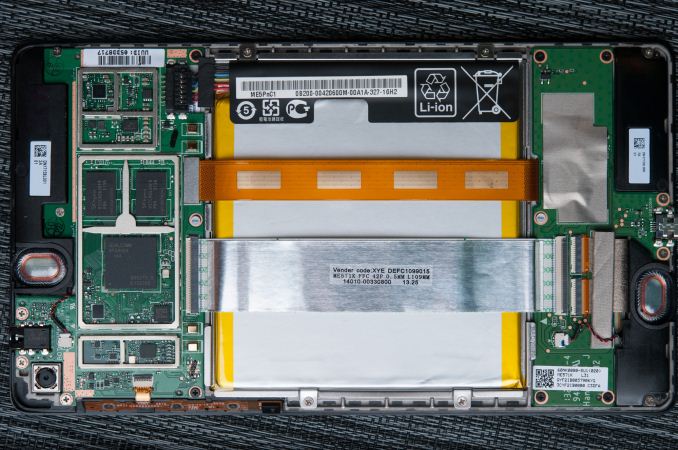
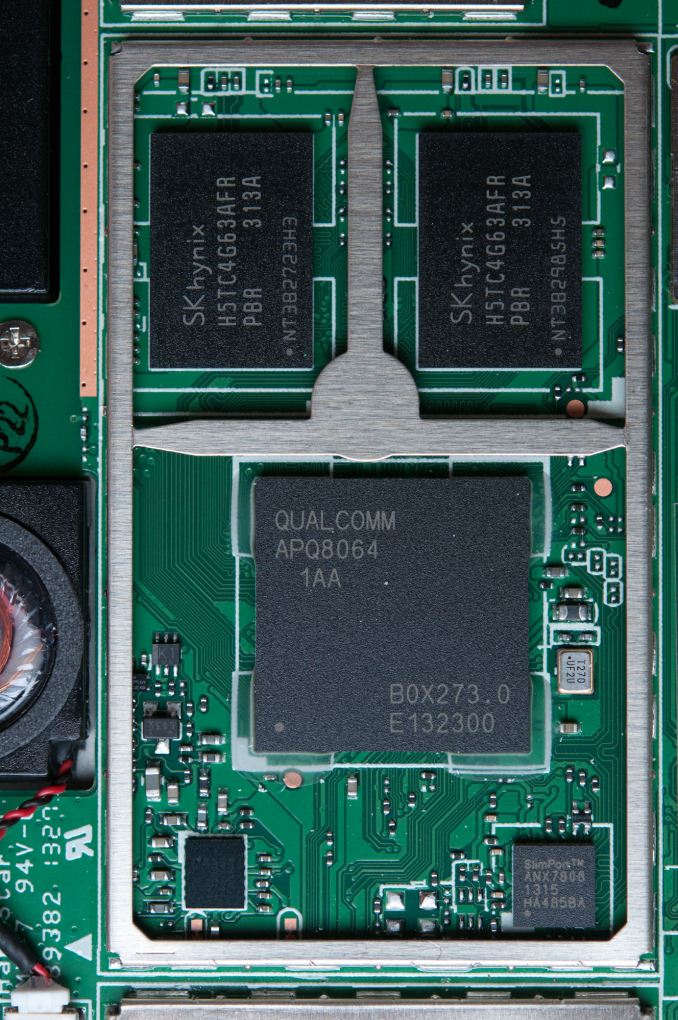














252 Comments
View All Comments
Impulses - Sunday, July 28, 2013 - link
As the happy owner of an OG Transformer, I'm looking forward to upgrading to the new Nexus 7 (I've come to realize I prefer a smaller tablet for my uses), the TF will probably go to my father. Happy to support ASUS either way as I'm generally happy with their entire Android tablet strategy.Affectionate-Bed-980 - Saturday, July 27, 2013 - link
As much as I love quick reviews, please make sure that you follow up on your promises for a full review... soon. Where's that GS4 review Part 2 for example?FergusMackenzie - Saturday, July 27, 2013 - link
This look like an excellent tablet with one exception. 16:10 is a horrible aspect ratio on a tablet. Why does no major android manufacturer make a tablet with 4:3 aspect ratio?Broo2 - Saturday, July 27, 2013 - link
Most tablets are going 16:9 as that fits the 1920x1080 HD video standard and vendors probably get many complains from users watching HD 16:9 movies with black bars and the static sized Magazines/Comics/PDFs are a secondary concern.16:10 is not perfect for magazines/comics/PDFs, but it is better than 16:9; I have only seen the new Nexus 7 and the B&N Nook HD+ with this aspect ratio. The only 4:3s are the iPad and eInk eBook readers... :(
guidryp - Saturday, July 27, 2013 - link
Most Android tablets are 16:10, not 16:9.B&N Nook HD+ is not 16:10. It is 3:2. Which is a pretty good compromise. We need more like that.
Bob Todd - Monday, July 29, 2013 - link
Unless it was something odd with Cyanogenmod 10.1.2 on the Nook HD+, I'd have concerns about 3:2 in general. I always like the extra pixels, but I think that aspect ratio was rare enough that it tripped up a fair number of games that weren't tested properly on 3:2 (but worked fine on 16:9/16:10).charleski - Saturday, July 27, 2013 - link
In terms of rendering the varying aspect rations of books, comics and magazines 3:2 is probably the best compromise, but 16:10 isn't far off. 4:3 and 16:9 are both much worse.guidryp - Saturday, July 27, 2013 - link
It's irrelevant for regular novels which are just text, so you can read them on any ratio.Comics and Magazines would be good on 3:2, if your screen is big enough to show the whole page at once, which I would argue 7" isn't. If it isn't then matching ratios hardly matter. If you are going to be panning and zooming, I would definitely prefer 4:3 over 16:9/16:10.
Impulses - Sunday, July 28, 2013 - link
I like 16:10 in portrait a lot for web browsing and email, which is like 80% of my tablet use. Not sure why you'd prefer anything else for that or for media... 16:9 is noticeably narrower, grab any Win 8 tablet and see.Yofa - Saturday, July 27, 2013 - link
the original nexus 7 had a 1.2mp front-facing camera. that point is omitted from the comparison chart.